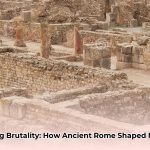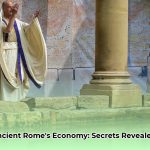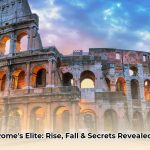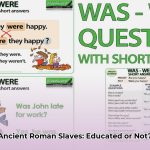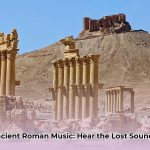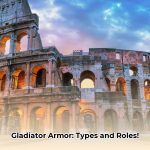So, you’re ready to plunge into the incredible world of Ancient Rome through books? Fantastic! It’s like unearthing a dynamic time capsule, overflowing with drama, profound ideas, and tales of immense triumphs—alongside some monumental failures. From the early stirrings of the Republic to the ultimate decline of the Western Empire, Rome’s narrative is rich with insights into power, human nature, societal evolution, and the enduring legacy of a civilization that shaped the modern world. We’ve curated a definitive list of must-read books to guide your exploration, spanning foundational texts to cutting-edge analyses. Consider these ancient Rome books for further exploration. Whether you’re a seasoned history enthusiast or just beginning your journey, this selection offers unique perspectives and invaluable knowledge. Prepare to discover why understanding Rome’s past remains critically important, even in our interconnected modern world, through the most engaging and insightful reads available in 2025.
Unveiling Ancient Rome: Your Curated Reading List for 2025
Navigating the vast ocean of books about Ancient Rome can feel daunting, much like entering an enormous library without a guide. This meticulously curated reading selection, however, includes everything from accessible introductions to focused explorations, suitable for casual readers, dedicated students, and everyone in between. We’ve prioritized works that offer both scholarly rigor and compelling narratives, ensuring you gain profound insights into this fascinating period. Let’s delve into these essential recommendations for 2025, covering the intriguing period from the vibrant Republic to the powerful Empire.
Getting Started: Essential Roman Overviews
Hoping to dip your toes into Roman history? Accessible works serve as excellent starting points, functioning as engaging guides that provide broad, digestible overviews. These books offer a vital foundational understanding without overwhelming the reader.
- SPQR: A History of Ancient Rome by Mary Beard: This isn’t merely another dry history textbook; it’s a lively and engaging journey through the Republic and the Empire, filled with fascinating characters, political intrigue, and a healthy dose of skepticism about the “official” story. Beard challenges many long-held assumptions about Rome, encouraging readers to think critically about historical narratives. It’s an indispensable read for any beginner and a refreshing take for seasoned historians alike.
- Rubicon: The Last Years of the Roman Republic by Tom Holland: While focused on a specific, dramatic period, Holland’s gripping narrative makes for an incredibly accessible entry point into Roman political life. He vividly recounts the dramatic end of the Roman Republic, focusing on key figures like Julius Caesar, Cicero, and Pompey, bringing to life the political intrigue, betrayal, and ambition that led to the transition from republic to empire.
- The Roman Way by Edith Hamilton: This classic offers a fascinating glimpse into the history and culture of Ancient Rome through biographical sketches of its prominent citizens. Hamilton paints a picture of an incredibly resilient and resourceful society, showcasing the spirit of Rome in all its complexity and contradictions, making it a highly engaging introductory read into the Roman mindset.
Key Figures: Power, Politics, and Personalities
Understanding the driving forces behind Roman history often means examining its most influential individuals. Figures like Julius Caesar, Emperor Augustus, and Cicero loom large when exploring this era. Biographies offer intimate glimpses into the lives of these powerful figures, revealing what truly motivated them and how they profoundly shaped Roman civilization.
- Ten Caesars: Roman Emperors from Augustus to Constantine by Barry Strauss: Strauss tells the story of the Roman Empire’s rise and fall through the lives of ten of its most famous rulers. Beginning with Augustus and ending with Constantine, Strauss paints a broad picture of Roman history that is both fascinating and complex, highlighting common themes that link their lives, from political machinations to military strength.
- Augustus: First Emperor of Rome by Adrian Goldsworthy: This masterful biography meticulously traces Augustus’s life from his childhood to his military campaigns and subsequent rise to power. Goldsworthy paints a vivid portrait of the man, his character, and his motivations, providing readers with a nuanced understanding of why Augustus was so successful in consolidating power and creating the Roman Empire.
- Cicero: The Life and Times of Rome’s Greatest Politician by Anthony Everitt: Everitt brings to life one of Rome’s most influential figures, Marcus Tullius Cicero, a statesman, lawyer, and philosopher. The book explores Cicero’s contributions to philosophy, rhetoric, and politics within the turbulent final years of the Roman Republic, offering deep insights into a man who shaped Roman and Western intellectual traditions.
The Roman Republic: Genesis of Power and Decline
Grasping the Roman Republic’s trajectory is crucial for understanding the empire that followed. This period, marked by both remarkable expansion and internal turmoil, provides invaluable lessons in governance and societal collapse.
- Rubicon: The Last Years of the Roman Republic by Tom Holland: As mentioned, Holland’s compelling account of the Republic’s final years, from the First Triumvirate to the death of Julius Caesar, is essential. He details the political and military events as well as the social and economic conditions that led to civil war, bringing to life the personalities and ambitions that shaped one of history’s most pivotal moments.
- The Storm Before the Storm: The Beginning of the End of the Roman Republic by Mike Duncan: From the creator of the popular “History of Rome” podcast, this book delves into the decades of political and social instability that preceded the Republic’s collapse. Duncan examines how greed, corruption, and inequality undermined the republic’s stability, making complex historical events accessible and thought-provoking.
- The History of Rome by Livy: This monumental work, though only partially surviving, chronicles Rome’s foundation through its early Republic. Livy blends myth and history to tell the story of Rome’s rise to power, capturing the Romans’ values, virtues, and struggles, offering a firsthand look at how they saw themselves. While a challenging read, it offers unparalleled primary insight.
The Roman Empire: Grandeur, Governance, and Gradual Fade
The Empire—a period of immense power, monumental public works, and eventual decline. This era saw Rome reach its zenith before slowly succumbing to a complex array of pressures.
- The Decline and Fall of the Roman Empire by Edward Gibbon: A cornerstone of historical literature, Gibbon’s sweeping account chronicles the Empire’s decline from its height to its eventual extinction in the West. While controversial for its criticisms of Christianity, Gibbon’s work profoundly shaped our understanding of Rome’s fall and remains vital for grasping the traditional narrative of internal decay and corruption.
- Pax Romana: War, Peace, and Conquest in the Roman World by Adrian Goldsworthy: This comprehensive history focuses on the period of peace and stability from Augustus to Marcus Aurelius. Goldsworthy provides a nuanced picture of Roman society during its golden age, highlighting the vastness of the empire and the challenges its rulers faced in maintaining peace and order, as well as how Romans spread their culture.
- The Emperor in the Roman World by Fergus Millar: This detailed examination explores the multifaceted role of the emperor in Roman society. Drawing on a wide range of sources, Millar shows how the emperor was both a political and religious figure, exerting significant influence over Rome and often using power to further his own agenda, sometimes leading to conflict with other elites.
Everyday Life: Society and Culture in Ancient Rome
Roman history extends far beyond emperors and military campaigns. It encompasses the daily experiences of ordinary Romans. Understanding the societal and economic forces that shaped their world is vital. What were their priorities? How did they live, work, and entertain themselves? Delving into these aspects provides a richer, more complete picture of the past, illustrating the complex social structures and cultural norms that defined their existence.
- Daily Life in Ancient Rome: The People and the City at the Height of the Empire by Jerome Carcopino: Carcopino expertly brings to life the people and places of Ancient Rome, painting a vivid picture of what it was like to live in this bustling metropolis. Through his compelling narrative, we learn about different social classes, their interactions, and the influence of religion and culture on daily life.
- Domina: The Women Who Made Imperial Rome by Guy de la Bédoyère: This fascinating book brings to light the often-overlooked stories of women who wielded power behind the scenes in Ancient Rome. De la Bédoyère covers a wide range of topics, from the wives of Sulla and Caesar to empresses like Messalina and Agrippina the Younger, offering a vivid picture of life in Imperial Rome and women’s role in shaping its history.
- Meditations by Marcus Aurelius: Written by a Roman emperor and Stoic philosopher, this work consists of personal reflections on duty, virtue, and the human experience. While not a history book, it offers profound insights into the mind of a Roman ruler and the philosophical underpinnings of his era, providing a unique window into Roman thought.
| Aspect | Description | Key Takeaways |
|---|---|---|
| Daily Life | How Romans spent their days, from dawn to dusk, their routines, and homes. | Insights into family life, domestic arrangements, and personal habits. |
| Economy | Dynamics of jobs, trade, markets, and personal finances within the Empire. | Understanding of social mobility, wealth distribution, and resource management. |
| Social Structure | Classes, family units, slavery, and community interactions that defined Roman society. | Appreciation for the intricate hierarchies and political landscape. |
| Entertainment | Public games, theatrical performances, leisure activities, and festivals. | Glimpses into Roman values, collective experiences, and cultural rituals. |
Revisionist Histories and Modern Interpretations
History is a dynamic field, constantly undergoing re-examination. New insights and understandings emerge regularly, often challenging conventional wisdom and long-held assumptions. Are we truly getting the complete story of this ancient civilization? Examining these new perspectives on Rome can significantly enrich our understanding, encouraging a more critical and nuanced appreciation of its complex legacy. It’s an opportunity to scrutinize what we think we already know.
- The Fate of Rome: Climate, Disease, and the End of an Empire by Kyle Harper: In a compelling revisionist account, Harper presents a strong case that environmental changes and widespread disease played a significant—and often overlooked—role in the Roman Empire’s collapse. Through an analysis of historical data, he shows how unusually wet and cold summers led to crop failures, hunger, and unrest, while new diseases exacerbated the problem, offering a stark counterpoint to purely internal decay theories.
- Twelve Caesars: Images of Power from the Ancient World to the Modern by Mary Beard: Beard explores how images of the twelve Roman emperors have been used throughout history, from Roman mythology to modern interpretations. She discusses how these images conveyed messages of tyranny or hope, demonstrating how our understanding of Roman figures is constantly reinterpreted through contemporary lenses.
- The Corrupting Sea: A Study of Mediterranean History by Peregrine Horden and Nicholas Purcell: While not solely about Rome, this book offers a fascinating exploration of how the Mediterranean Sea has shaped the development of human civilization, including the trajectory of the Roman Empire. It’s a vital read for understanding the environmental and geographical contexts that influenced Roman expansion, trade, and ultimately, its vulnerabilities.
The Great Debate: Why Did Rome Fall?
The question of why Rome collapsed remains one of history’s most enduring mysteries. While Gibbon emphasized internal corruption and decay, other theories suggest climate change, widespread disease outbreaks, military overstretch, or economic factors. Was it a complex interplay of these factors? Was there a single turning point, or a series of gradual erosions? It’s highly probable that historians will continue to discuss and debate this issue for centuries to come, seeking a definitive explanation for the causes of Rome’s decline. Examining books like Harper’s The Fate of Rome in conjunction with Gibbon’s classic offers a rich, multifacted perspective on this ongoing scholarly discussion.
Core Insights into Rome’s Enduring Legacy:
- The volatile transition from the Roman Republic to the Empire, driven by political schemes, economic disparities, and personal ambition, offers invaluable lessons about the fragile nature of democratic standards and the concentration of power.
- Significant climate shifts and devastating disease outbreaks, as highlighted by modern scholarship, acted as critical catalysts in the decline of the Roman Empire, exacerbating its existing vulnerabilities and challenging traditional narratives focused solely on internal factors.
- Contemporary interpretations of Roman history are often influenced by modern political and social contexts, shaping how we understand and reinterpret historical events, from the roles of women and marginalized groups to the environmental impact of empires.
Actionable Steps: Your Roman Reading Journey
Here’s a practical approach to navigating your Roman reading journey, tailored for different groups to maximize your learning and engagement with this incredible civilization.
For Students and Enthusiasts:
- Short-Term (0-1 Year): Begin with accessible overviews, such as Mary Beard’s SPQR, to establish a solid foundational knowledge of Roman history. Supplement this with an engaging biography like Strauss’s Ten Caesars to connect with key figures.
- Long-Term (3-5 Years): Progress to more specialized areas, exploring subjects like the Roman economy (Daily Life in Ancient Rome), the lives of women in Ancient Rome (Domina), or the specific political machinations that shaped the Republic (Rubicon, The Storm Before the Storm). Engage with revisionist histories like The Fate of Rome to broaden your perspective.
For Teachers:
- Short-Term (0-1 Year): Integrate diverse viewpoints and primary source accounts (like Livy or excerpts from Suetonius) into your curriculum, offering students a multifaceted understanding of Roman history. Utilize engaging narratives from Holland or Duncan to capture student interest.
- Long-Term (3-5 Years): Regularly update your teaching materials to include recent research, especially on environmental and social history, and address historical underrepresentation. Encourage critical thinking by presenting conflicting theories, such as those on Rome’s decline.
For Publishers:
- Short-Term (0-1 Year): Actively commission and hire historians from diverse backgrounds to produce works that address gaps in existing scholarship, particularly on non-elite Roman life, provincial histories, or new interdisciplinary approaches (e.g., archaeo-climatology).
- Long-Term (3-5 Years): Support the translation and global dissemination of international research on Roman history, making it accessible to a broader English-speaking audience. Invest in digital resources and interactive platforms that can complement traditional print media.
Beyond the Books: Immersive Learning
Looking for alternative ways to engage with Roman history? Explore mediums such as podcasts like “The History of Rome” by Mike Duncan. They can offer a more immediate and conversational entry point than traditional books, often presenting fresh angles and discussions on the past. Consider how interactive digital platforms, virtual tours of ancient sites, or documentaries can promote a richer historical comprehension, bringing the ruins and artifacts to vivid life.
The Environment’s Grip on Roman Destiny
Examining the environmental backdrop provides another critical lens through which to understand Rome. Books like The Corrupting Sea illustrate how the environment profoundly affected Roman civilization’s trajectory, from trade routes and resource management to agriculture and population centers. How did shifts in climate and landscape shape its development and eventual path? Did you know that recent research, highlighted in The Fate of Rome, indicates the “Late Antique Little Ice Age” in the 6th century CE severely impacted Roman agriculture and economy? Its effects were far-reaching, contributing to widespread crop failures, food shortages, and increased economic instability, significantly weakening the remaining parts of the empire. This demonstrates that external, natural forces often played as significant a role as internal politics in shaping ancient civilizations.
By delving into these recommended books and exploring these varied perspectives, we can unlock a more complete and utterly fascinating view of Ancient Rome. This deeper understanding will not only enrich our appreciation for its complex past but also provide invaluable expert insights that resonate with today’s challenges concerning governance, environmental change, and societal resilience.


